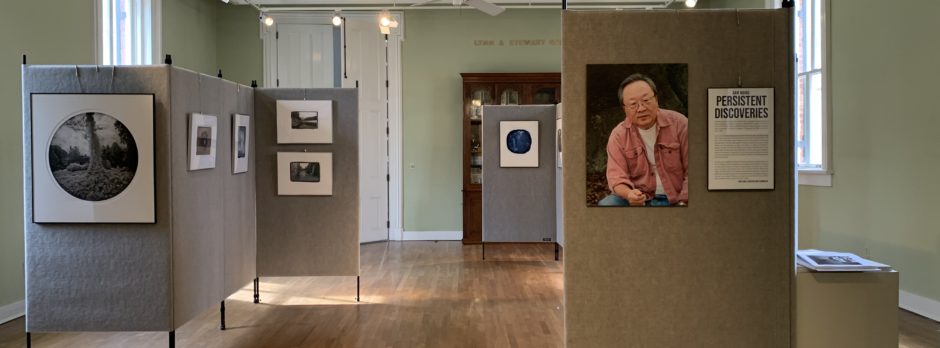Gammill Gallery
About the Gammill Gallery
Mission
The Gammill Gallery is a visual arts exhibition space conceived to inspire and engage audiences and to promote public understanding of the American South as a diverse and complex regional culture.
VIsion
The Gammill Gallery seeks to exhibit a broad range of artwork focused on the South as a social, cultural, and physical space that has both a long history and an evolving future. Neither the artists nor the work exhibited are required to be from the region, but all work should address concepts and issues relevant to the present-day South.
VALUES
The Gammill Gallery is committed to creating an inclusive environment where all voices are heard. At least two exhibits annually will be dedicated to showcasing the work of underrepresented artists or underrepresented communities.
HISTORY
The Gammill Gallery, located in the heart of Barnard Observatory, is named for Lynn and Stewart Gammill of Hattiesburg, Mississippi, longtime supporters of the Center for the Study of Southern Culture.
Exhibitions primarily devoted to documentary-style photography from the American South, including some of the region’s most respected photographic educators and professionals such as Maude Schuyler Clay, William Ferris, Will Jacks, Betty Press, Tom Rankin, Euphus Ruth, Jerry Siegel, and Bill Steber, to mention only a few, have hung in the Gammill Gallery.
The Gammill Gallery is open Monday through Friday, 9:00 a.m. – 5:00 p.m., except for University holidays. For more information, contact us.
On display now:
We birthed the movement: the warren county pcb landfill protests 1978-1982
In December 1978, North Carolina Governor James B. Hunt, Jr. announced a plan to build a toxic landfill in the rural community of Afton (Warren County) to store 60,000 tons of soil laced with cancer-causing polychlorinated biphenyls (PCBs) that had been dumped illegally on 240 miles of North Carolina roadways earlier that summer. Over the next four years, a group of concerned citizens responded, mounting legal and scientific challenges to what they deemed an act of “toxic aggression.”
By 1982, after attempts to block the landfill through the courts had failed, a broader coalition attempted to physically stop the trucks from bringing in the PCBs. After seven weeks of protests and more than 500 arrests, the State still dumped more than 7,000 truckloads of contaminated soil into a community whose population was 60 percent Black. The intersection of environmentalism and civil rights in the Warren County fight was transformational. Forty years later, it has become recognized as the birthplace of the environmental justice movement.
This exhibition was curated in collaboration with protest participants, eyewitnesses, and those who continue to organize for justice in Warren County.

